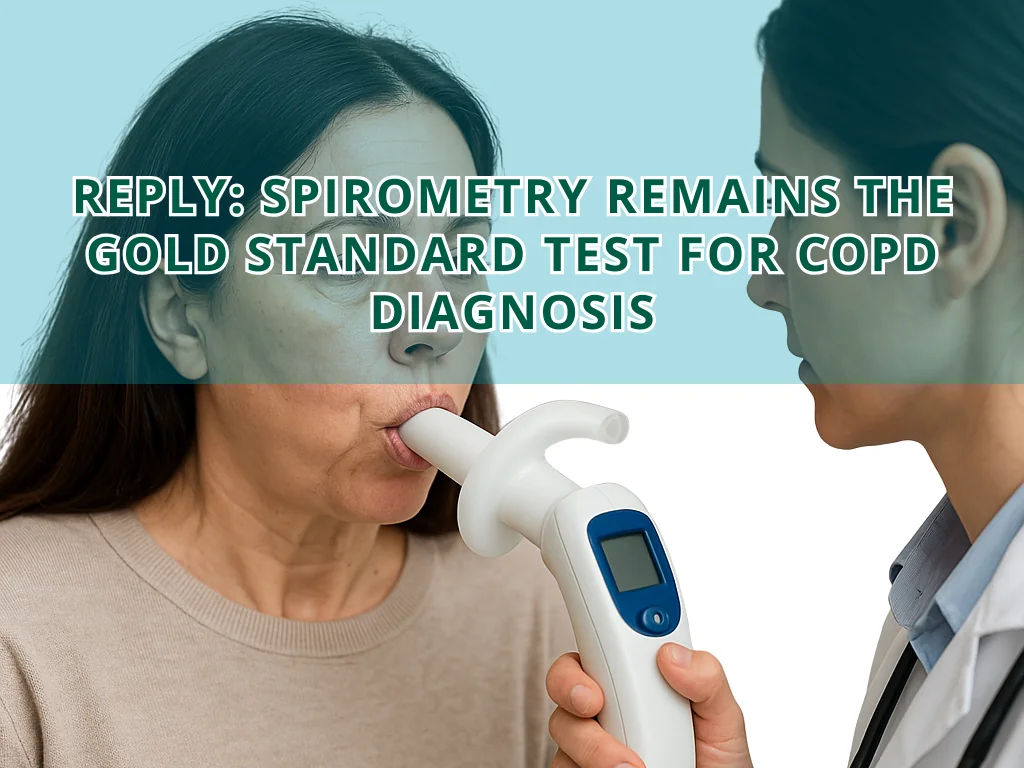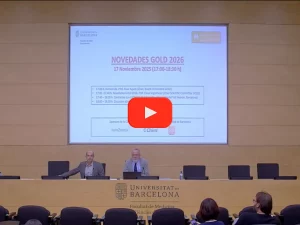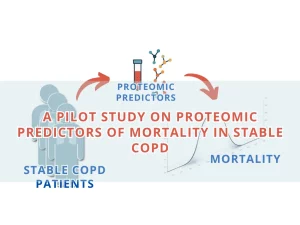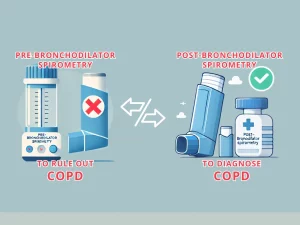Reply: Spirometry remains the GOLD standard test for COPD diagnosis

Spirometry: The Foundation of COPD Diagnosis
GOLD Criteria and the Role of Pre-Bronchodilator Testing
We read with interest the letter from P. Finamore and co-workers, which discusses the practical implementation of the Global Initiative for Chronic Obstructive Lung Disease (GOLD) science committee recommendations for the use of spirometry to diagnose COPD.
GOLD states that the clinical assessment of chronic respiratory symptoms and exposure to risk factors is the starting point to identify individuals in whom a diagnosis of COPD should be considered.
Using the fixed ratio of forced expiratory volume in 1 s (FEV1) to forced vital capacity (FVC) <0.7, pre-bronchodilator (BD) testing can be used to either rule out the presence of airflow obstruction (ratio >0.7) or identify individuals who require post-BD testing to confirm the presence of airflow obstruction (ratio <0.7) and hence the diagnosis of COPD.
P. Finamore and co-workers agree that pre-BD testing has the potential to save time by avoiding unnecessary post-BD testing.
Concerns About Technical Accuracy in Primary Care
P. Finamore and co-workers have low confidence that spirometry, both pre- and post-BD, can be performed to the required technical standards in primary care or can be used to exclude obstruction.
A study by Hegewald et al. conducted in primary care is cited in support, where the accuracy of the spirometry devices was investigated. The mean accuracy error in the FEV1/FVC ratio was 5.84% and the authors claimed this could result in 28% of patients who had a ratio indicating obstruction on laboratory testing appearing to have a normal ratio on primary care assessment.
GOLD recommends that individuals with FEV1/FVC ratios close to the threshold should be closely followed up, including having repeat spirometry, given the high likelihood of the development of post-BD obstruction over time.
Primary Care Quality and Solutions for Resource Limitations
The issue regarding the technical accuracy of individual devices is different to the question of whether spirometry conducted in primary care is of adequate quality.
Hegewald et al. also reported that 68% of spirometry tests were of acceptable quality when performed in clinics with a high volume of testing, while other studies have shown that rates of up to approximately 80% can be achieved in primary care.
Based on these results, we have greater confidence than P. Finamore and co-workers that the diagnosis of COPD with spirometry can be performed in primary care.
Advocating Training and Innovative Service Models
We understand that the training of individuals to perform spirometry to the required standards in primary care may be a resource issue that varies between geographical locations.
Innovative solutions may be required, such as the pooling of local resources so that spirometry is conducted at specific centres (hubs) or by a trained individual who provides this service to a number of different primary care locations.
We advocate increased training and innovative solutions to any potential resource issues, as the data indicates that quality primary care spirometry can be achieved.
Authors
Dave Singh, Alvar Agusti, Claus Volgelmeier, David Halpin
Read more details at
Fecha de publicación
2025 Jun 5 (Published)
Categorías asociadas al artículo
Noticias relacionadas

Vídeo de la Presentación de las Novedades GOLD 2026
Video de la presentación «Novedades GOLD 2026», en el que se trataron, entre otros aspectos: cambios en diagnóstico de la EPOC, tratamiento, comparativa con GESEPOC, etc.

Próximo webinar (presencial y telemático) sobre GOLD 2026
Descubre las novedades del informe GOLD 2026 en este webinar gratuito desde la Universidad de Barcelona. Participa online o presencialmente.

Treatable Traits. Why, What, How?
Discover how the Treatable Traits approach transforms the management of asthma, bronchiectasis, and COPD through personalized precision medicine strategies.

II edición RESPrimaria, 7 de mayo de 2025
No te pierdas la II edición RESPrimaria el próximo 7 de mayo. Inscríbete en formato Streaming o solicita tu invitación presencial. ¡Plazas limitadas!

A Pilot Study on Proteomic Predictors of Mortality in Stable COPD
Proteomic Predictors of Mortality in Stable COPD is the objective of this pilot study. It searchs to identify proteomic markers and specific multiprotein signatures that could be useful in predicting long-term mortality

GOLD Science Committee recommendations for the use of pre- and post-bronchodilator spirometry to diagnose of COPD
Siprometry to diagnose COPD: GOLD 2025 recommends using pre-BD spirometry to rule out COPD and post-BD to confirm, ensuring volume responders are not overlooked.
Imagen desarrollada por IA y Canva
